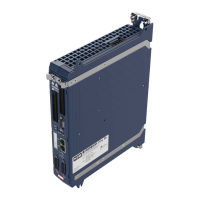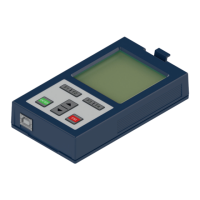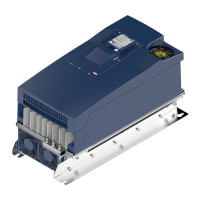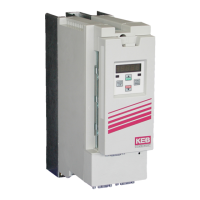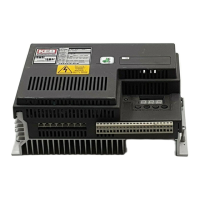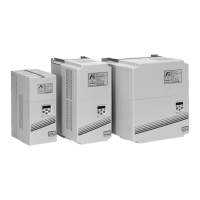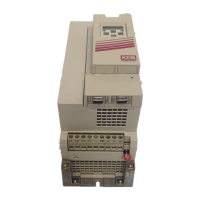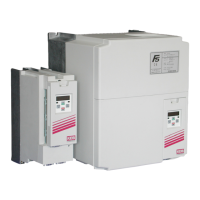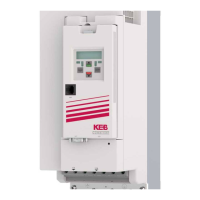The configuration of the task times occurs by parameter is22 basic Tp.
62.5 µs / 16 kHz, 8 kHz, 4 kHz, 2 kHz
Selection of the switching fre-
quency group and thus the basic
control grid
71.4 µs / 14 kHz, 7 kHz, 3.5 kHz, 1.75 kHz
83.3 µs / 12 kHz, 6 kHz, 3 kHz, 1.5 kHz
100 µs / 10 kHz, 5 kHz, 2.5 kHz, 1.25 kHz
Configuration of the middle inter-
rupt grid as a multiple of the
basic control grid
A changed value in is22 is only effective after the next power-on.
is10 switching frequency and is16 min. derating frequency are auto-
matically adapted to the new switching frequency group.
➢ This means: if is10 previously is set to 8 kHz, the value of is10 after
PowerOn is automatically changed to 6 kHz by changing the switch-
ing frequency group from 0 to 2.
Bit 0…2 basic Tp
The "μs value" indicates the basic process time (e.g. 62.5 μs). The kHz values are
the switching frequencies which can be adjusted with the selected basic process
time.
Precondition: The switching frequency is supported by the respective inverter (=>
Installation manual).
Bit 3…4 mid irq
Digital inputs, analog inputs, state machine, operating modes, PDOs, system coun-
ters run in the middle interrupt level (in the task "mid irq“).
This is called with the setting 0: 8xTpBase every eight "basic Tp“. If 0 is selected as
switching frequency group and the control grid is 62.5µs, the average interrupt is
called every 8 X 62.5µs = 500µs.
Smaller grids for the middle interrupt level can only be set under certain conditions
due to the time load of the control card:
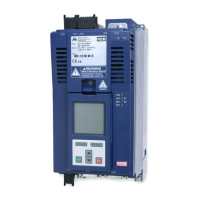
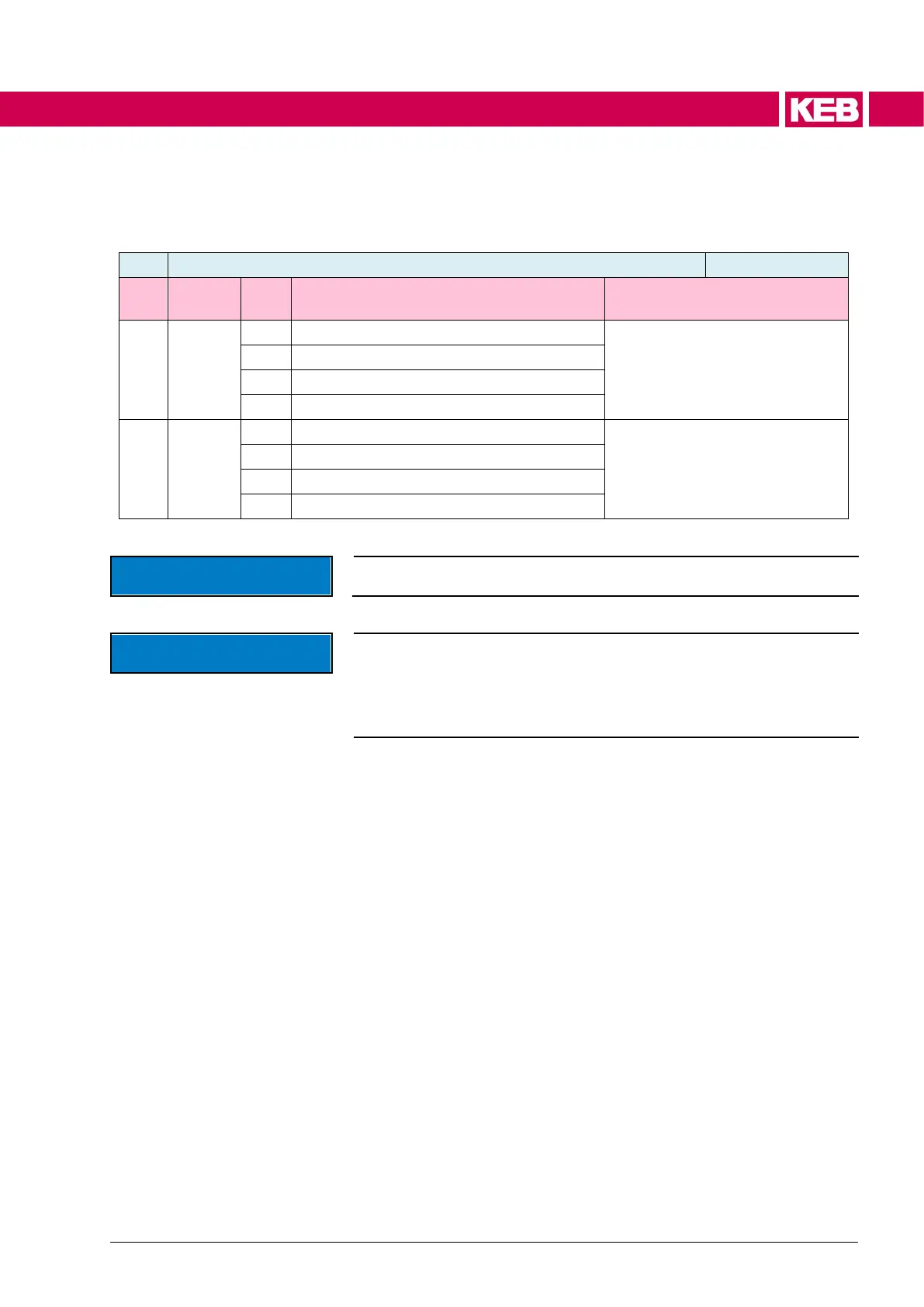